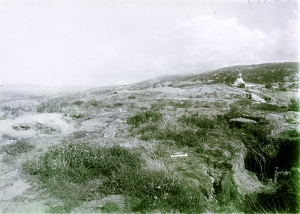Gallipoli and the Nunawading Shire
Research news
The stories of the home front and the battle front are inextricably linked – War Historian Michael McKernan
The lives and deaths of the 29 young men from the Shire of Nunawading in Melbourne’s east who died during the Gallipoli campaign of World War l is the subject of a valuable new research project by Deakin University’s Dr Steve Cooke.
“The little picture often tells the big picture,” said Dr Cooke, a member of the Alfred Deakin Research Institute (ADRI).
“This is one of the things that I am hoping to achieve with this project, as well as to provide modern residents of the area with richer understanding of those young men, and those who knew them, when they abandoned their normal lives to enlist in World War l.”
The project is being funded by the Box Hill , Mitcham and Blackburn RSL sub-branches.
In 2012, Box Hill branch president Tony Bowden, visited Gallipoli. He noticed a name on a grave, Sweetland, one he recognised as the name of a street in Box Hill.
On return, he visited the local war memorial and found engraved there the name Sergeant Stephen Sweetland.
He was a clerk from Box Hill who had enlisted in the 8th Light Horse in September 1914 and was killed in June, 1915 from wounds he received at The Battle of the Nek.
Bowden investigated further and found that 29 men from the Nunawading area had been killed at Gallipoli and felt it vital that their stories be better known, particularly with the centenary of Gallipoli approaching.
“He has provided a grant to Deakin to undertake more detailed research into those young men,” said Dr Cooke.
“The research will form a key part of the RSL’s centenary commemorations.
“It will result in a book detailing the stories that link the former shire of Nunawading to Anzac. The research will tell the story of those men and women from the shire that served and those that died during the Gallipoli campaign.
“It will also provide an account of Nunawading on the home front and show how the war affected the lives of local men and women both during and after the campaign, particularly the continuing impact of the war on those that returned.
“It will trace the personal and collective memories of those events and show the ways they resonate and are relevant to the Blackburn, Box Hill and Mitcham communities today.
“The Anzac commemorations are a moment when the community’s attention will be particularly focussed on the events of 1915.
“This publication will be an important opportunity to highlight the contribution of veterans and the continuing impact of the campaign on the local area.
“It will be an invaluable resource for the whole local community, particularly schools, in the lead up to the centenary.”
A number of stories have already been uncovered, including those of the Sloan brothers, James and Thomas, who were both killed when the troopship Southland was torpedoed in September 1915 in the Aegean Sea.
“A tragedy like that must have had a huge impact on those at home,” Dr Cooke said.
“Parents, other family members and friends would have dreaded the sight of telegrams being delivered in their street. This was something that was happening then not just in Nunawading but all over Australia.
“By getting a fuller understanding of what is was like in Nunawading in 1915, we can contribute to the understanding of what it would have been like for communities all over the country.”
Share this story
 Sergeant Stephen Sweetland was a clerk from Box Hill who had enlisted in the 8th Light Horse in September 1914 and was killed in June, 1915 from wounds he received at The Battle of the Nek.
Sergeant Stephen Sweetland was a clerk from Box Hill who had enlisted in the 8th Light Horse in September 1914 and was killed in June, 1915 from wounds he received at The Battle of the Nek.
